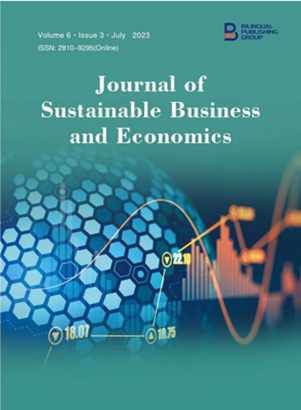-
281
-
191
-
178
-
164
-
140
Eco-Friendly Knit Garments Washing Implementation and Its Impact
DOI:
https://doi.org/10.30564/jsbe.v6i3.5803Abstract
Environment pollution is one of the major threats to today’s world and researchers say most of the pollution comes from the washing industry. So, the study aims to find out an alternative way to the existing chemical wash process of the washing industry to save the environment. To conduct this study, one knit washing factory has been selected that has eco-friendly wash facilities. The eco-friendly wash process samples have been developed and finally show the comparison in respect of time, per day production and test result to the conventional chemical wash processes along with the impact of production cost on the garment. For all eco-friendly process, it has been found that water consumptions are too less in comparison with conventional process potentials which is partially related to Sustainable Development Goals 13 (Climate Action). This study might help to find out a new era of doing washed knitted product business without polluting the environment.
Keywords:
Eco-friendly; Water consumption; Production time; Production costReferences
[1] Ali, A., Hossain, D., Shahid, M.A., 2018. Development of eco-friendly garments washing for localized fading effect on garments: A future sustainable process for single step dyeing fading effect. Advance Research Textile Engineering. 3(1), 1022.
[2] Kishor, R., Purchase, D., Saratale, G.D., et al., 2021. Ecotoxicological and health concerns of persistent coloring pollutants of textile industry wastewater and treatment approaches for environmental safety. Journal of Environmental Chemical Engineering. 9(2), 105012.
[3] Jailer, T., Lara-Meloy, M., Robbins, M., 2015. Workers’ guide to health and safety. Hesperian Health Guides: Berkeley.
[4] Ru, K., 2018. Consumer perceptions on sustainable fashion and strategy for competitiveness. Journal of Fashion Technology & Textile Engineering. 6(2), 1-4.
[5] Xie, K., Cheng, F., Zhao, W., et al., 2011. Micelle dyeing with low liquor ratio for reactive dyes using dialkyl maleic acid ester surfactants. Journal of Cleaner Production. 19(4), 332-336.
[6] Mamun Kabir, S.M., Sk, S., Koh, J., 2021. Sustainable low liquor ratio dyeing of cotton with CI Reactive Blue 21 using dioctyl sodium sulfosuccinate. Textile Research Journal. 91(9-10), 1083-1093.
[7] Cheung, H.F., Lee, Y.S., Kan, C.W., et al., 2013. Colour properties of plasma-induced ozone fading of cotton fabric. Advanced Materials Research. 811, 3-8.
[8] Matthews, J., 2011. Textiles in three dimensions: An investigation into processes employing laser technology to form design-led three-dimensional textiles [PhD thesis]. Loughborough: Loughborough University.
[9] Sarker, S., Rakesh, M.S.R., Alam, M.M., et al., 2016. Effects of dry washing process on denim garment. Chemical Science International Journal. 17(4), 1-10.
[10] Akiwowo, K., Kane, F.E., Tyrer, J.R., et al., 2017. CO2 laser dye patterning for textile design and apparel manufacture. Journal of Textile Engineering and Fashion Technology. 2(3), 394-399.
Downloads
How to Cite
Issue
Article Type
License
Copyright © 2023 Ahsan Habib, Zarin Tasnime, Mst. Tanjima Khatun, Osman Babaarslan, Md. Abdullah al Mamun

This is an open access article under the Creative Commons Attribution 4.0 International License.




 Ahsan Habib
Ahsan Habib

